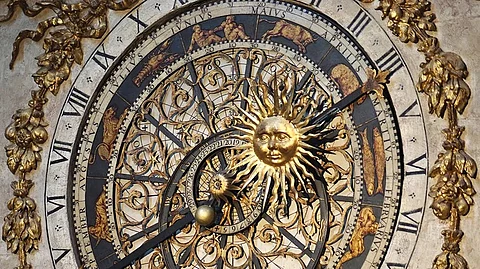
- NEWS
- the EDIT
- COMMENTARY
- BUSINESS
- LIFE
- SHOW
- ACTION
- GLOBAL GOALS
- SNAPS
- DYARYO TIRADA
- MORE

Did you know that the month of October in the year 1582 is missing 11 days? How did that happen?
The Julian calendar, first implemented by Julius Caesar in 46 B.C., widely used in the Christian world for centuries, was slightly inaccurate — it was 11 minutes and 14 seconds longer than the tropical year (the time it takes for the Earth to complete a cycle of seasons).
Over time, this small error added up, causing the calendar to drift by about one day every 314 years. This drift made it increasingly difficult to calculate the date of Easter, which had been set by the Council of Nicaea in 325 CE to fall on the first Sunday after the first full moon following the vernal equinox, then around 21 March.
By the 8th century, people noticed the problem, and proposals for calendar reform were brought before popes during the Middle Ages. However, no changes were made, and the Julian calendar remained in use.
Finally, in 1562–63, the Council of Trent issued a decree calling for the pope to address the issue. It wasn’t until 1582 that Pope Gregory XIII introduced the Gregorian calendar, based on suggestions from Italian scientist Luigi Lilio and refined by Jesuit mathematician Christopher Clavius.
To fix the drift, 10 days were removed from the calendar in October 1582, so October 4 was immediately followed by 15 October. This adjustment realigned the calendar with the seasons. October was chosen to avoid skipping major Christian holidays.
"By 1582, the Julian calendar, with a Leap Day every four years, had accumulated ten extra days relative to Earth's orbit. So Pope Gregory jump-started his new and exquisitely accurate calendar by canceling 10 days that year, in which 4 October was followed by 15 October," American astrophysicist and science communicator Neil deGrasse Tyson posted on X (formerly Twitter) in 2020, clarifying this historical mystery.
Initially, only Catholic countries like Spain, Italy, Portugal, and Poland adopted the new calendar, while Protestant and Orthodox nations resisted due to religious differences. As a result, Europe experienced a period where different regions were using different calendars, with a 10-day gap between them.
Some accounts claim that English citizens were outraged when an act of Parliament moved the calendar ahead overnight from 2-14 September, 1752. Allegedly, rioters filled the streets, demanding the government “give us our 11 days.”
However, most historians now argue that these protests were either fabricated or heavily exaggerated.
Over time, non-Catholic countries also adopted the Gregorian calendar. Protestant regions of Germany and the Netherlands switched in the 17th century, and Britain and its colonies followed in 1752. Eventually, the Gregorian calendar became the global standard, resolving the issues caused by the Julian calendar's inaccuracies.
